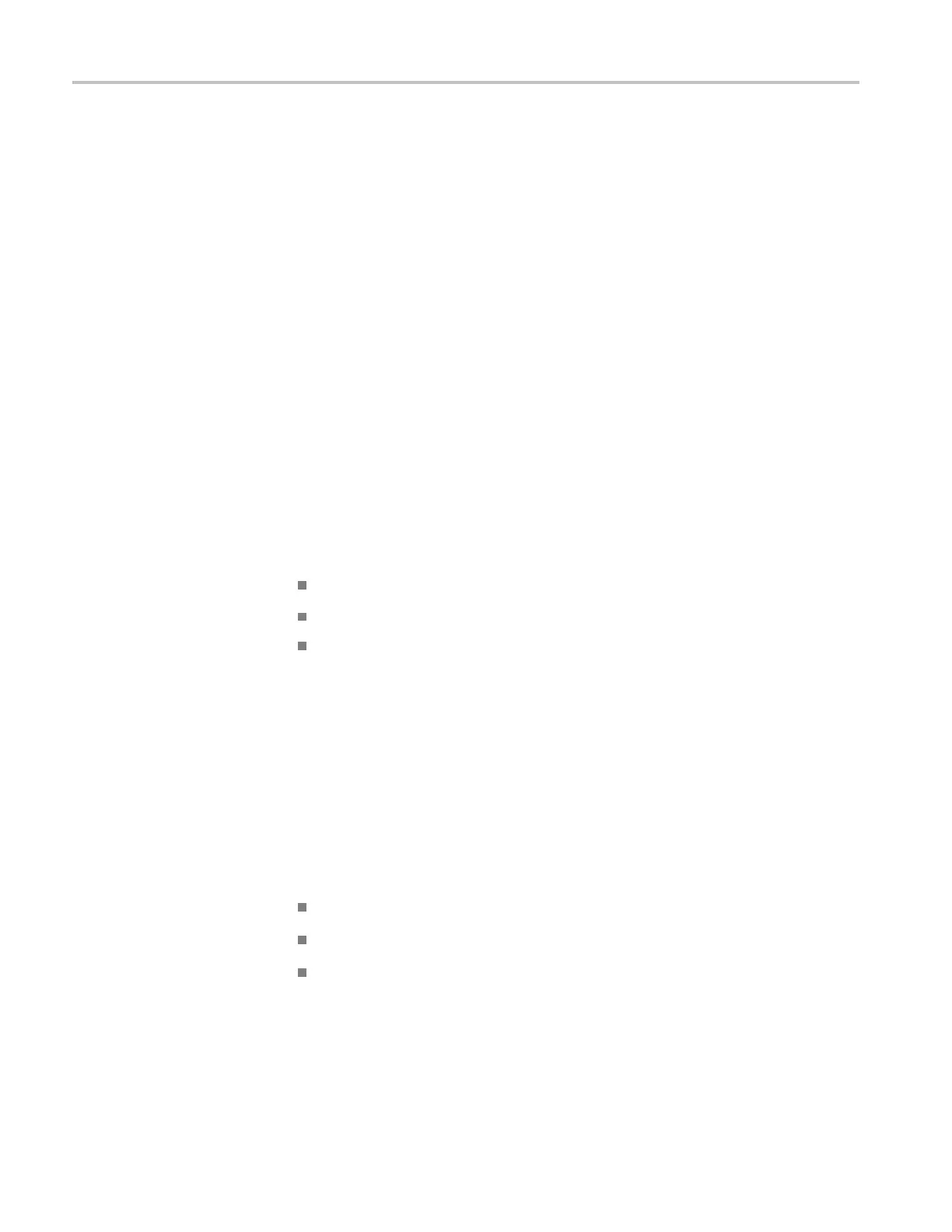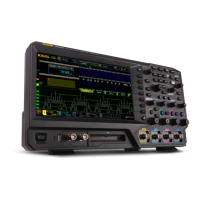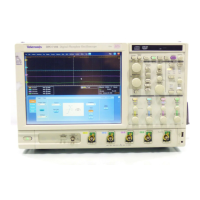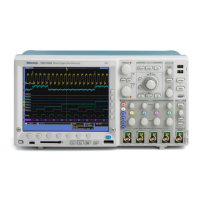Commands Listed in Alphabetical Order
Examples
CH2:WLENGTH:L
IST?
might return CH2: WLENLIST
FACTORY,1550,1310,USER,13 30
, indicating the available w avelengths for
Channel 2.
CH<x>:WLENg
th:VALue
This command sets or queries the wavelength for the channel specified by x,
which can be 1 through 8. (Generally, only optical modules in CH1 or CH2 have
filter s ele
ctions.) You can use the CH<x>:WLENgth:LIST? query to determine
the a vailable wavelengths.
Group
Vertical
Syntax
CH<x>:WLENgth:VALue <NR3> [ USER | FACTory ]
CH<x>:WLENgth:VALue?
Related Commands
CH<x>:WLENgth:LIST?
Arguments
NR3 specifies the wavelength.
USER must follow a user-calibrated value.
FACTory must follow a factory-calibrated value.
Examples
CH1:WLENGTH:VALUE 1310 sets the Channel 1 wavelength to 1310.
CH2:WLENGTH:VALUE? might return CH2:WLENGTH:VALUE 1550, indicating
that the wavelength for Channel 2 is set to 1550.
*CLS (No Query Form)
This comma nd (no query form) clears the follow i ng status data structures of
the instrument:
Event Queue
Standard Event Status Register (SESR)
Status Byte Register (except the MAV bit; see below)
If the *CLS command immediately follows an <EOI>, the Output Queue and
MAV bit (Status B yte Register bit 4) are also cleared. MAV indicates information
is in the output queue. The device clear (DCL) GPIB control message will clear
the output queue and thus MAV. *CLS does not clear the output queue or MAV.
2-90 DSA/CSA/TDS8X00/B Series Programmer Manual

